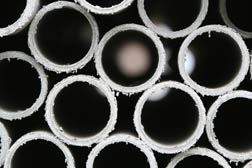 In spite of that, it has been reported that lead plaintiff Danny Dougan has been wheezing and complaining of shortness of breath. Is it due to an unusually early onset of asbestosis lung disease? Or is it due, as defendants suggest, from a years-long smoking habit?
In spite of that, it has been reported that lead plaintiff Danny Dougan has been wheezing and complaining of shortness of breath. Is it due to an unusually early onset of asbestosis lung disease? Or is it due, as defendants suggest, from a years-long smoking habit?The Journal Inquirer (2/12/16) reports that some workers involved in a 2010 reconstruction project at Sikorsky Aircraft, located in Stratford, may have been exposed to asbestos in spite their employer providing assurance that there was no asbestos present, or so it has been alleged.
According to the asbestosis lawsuit report, employees of Sikorsky, co-defendants Carrier Corp., and URS Corp. AES, and B-G Mechanical Contractors Inc. of Chicopee, Massachusetts (B-G), were tasked with the removal of pipes and fittings in a boiler house as part of a reconstruction that occurred between March and July 2010. The boiler house dated back to 1930 and is described as a “cogeneration” plant that produced both heat and electricity.
The use of asbestos as insulation for pipes and boilers was common practice in that era, prior to the carcinogenic risks of asbestos becoming more widely known to the greater population.
Lead plaintiff Dougan was an employee of B-G. Dougan and his fellow plaintiffs from B-G as well as other workers involved in the project inquired as to the presence of asbestos in the plant and what the risks might be. According to the asbestosis disease lawsuit, the workers were subsequently informed by the defendants that “testing had been done, that asbestos was not present on the pipes and pipe fittings, and that it was safe for them to do the work to which they had been assigned,” according to court documents related to the lawsuit.
It has been reported that workers commenced operations in the cogeneration plant amidst continued misgivings, and continued to raise the matter until testing was conducted in early July of that year.
The tests revealed the presence of asbestos. “Visible asbestos and overloaded air samples” were found as a result of improper disturbance of insulation containing asbestos on pipes and pipe fittings, the lawsuit alleges. “Despite these results, the project was not shut down until approximately two weeks later,” the suit continues, saying workers continued to be exposed during that time.
It was at this time that licensed asbestos contractors were brought in to safely remove asbestos. Sikorsky employees, who continued to operate the boilers and keep them active during the reconstruction project, began to wear respirators following the release of test results.
But by then, was it too late?
In approving class-action status for the asbestosis lung cancer lawsuit, Judge Grant Miller of Hartford Superior Court noted that employees of Sikorsky and Carrier would be limited as to their participation in the class-action lawsuit given existing rules governing Workers’ Compensation. The latter, according to the Journal Inquirer, makes it relatively easy for workers to collect asbestosis exposure compensation from their employers, but said compensation could be limited under Workers’ Compensation rules. Plaintiffs would have to litigate that point individually, as well as litigating the extent and nature of medical monitoring needed in order to minimize the negative health impacts of asbestos exposure going forward.
As noted earlier, the alleged exposure to asbestos occurred in 2010, or six years ago. Typically, asbestosis pleural plaques can languish within the body for upwards of 30 years before suddenly emerging in the form of asbestosis cancer. Thus the thrust of the asbestos lawsuit - which has been approved as a class action - would be the potential for asbestosis lung complications in forthcoming decades, and various applications of medical monitoring to be conducted over time that may succeed in minimizing adverse effects.
READ MORE ASBESTOSIS LEGAL NEWS
The defendants in the lawsuit are expected to respond with Dr. Barry William Levine of Massachusetts General Hospital, who is expected to testify that Dougan does not suffer from asbestosis lung disease, but rather “Mr. Dougan does suffer from severe emphysema attributable to his long history of smoking cigarettes and, as a result, Mr. Dougan requires regular medical surveillance.”
Stay tuned…

READER COMMENTS
richard martin
on
Donald Sass
on
I arrived there in July 1950 and left Sept or Oct on one of the ships I worked on, LSD21. AT times we were covered by the Asbestoes used on pipes, fittings and material used to keep the ships in good condition when stored.
In 1991 I was recalled to Active duty due to my experience with the LSD type of ship. My position was assisting the conversion of ship LSD15 to a Fire fighting training utility, in Mobile AL at an Island in Mobile Bay.
I was stationed there for six Months and then returned to Reserve Duty in Portland OR, where I was an Officer in a Reserve Unit.
The VA determined and verified my exposure to Asbestos and awarded me a 30% disability. Among the VA medical RXs I take/have inhalation medicine and was issued Emerg. Inhalation inhaler by the VA
I registered a month ago+ with this board but have not heard from any other source. I am now 83 and will be 84 in Feb 2017. I don't want to wait until I am incapable to follow through with my complaint.
I have a return appointment with the VA on Oct 25 this year.
Ashok Verma
on